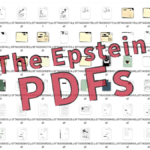The future: re-imagining the best possible definition of PDF
Specifications, standards, agility, correctness and the reliability imperative
Session description
The PDF specification is critical to the PDF technology ecosystem and its stakeholders. “The spec” is the “law” that defines what a valid PDF file must be. While PDF does not have a reference implementation, the common practice of relying on reverse-engineering the work of others, or examining PDFs “from the wild” tends to lead to even more variously malformed PDF files and differing implementations. For this reason, then, the goal of the PDF specification is to always be clear, precise, unambiguous, error-free, easy to navigate, and easy to understand for all its many readers. Since PDF 1.0 was originally published in 1993 the format has been defined by a large volume of technical descriptive text published in the style of a monolithic book. At 1,000 pages the current PDF 2.0 specification is not only large, it’s also difficult to navigate, and challenging to locate all information about a specific feature. Worse, related information is often disjointed, dispersed or even contradicted throughout the document. The problem extends beyond PDF’s own specification when one considers the other 89 other referenced documents and standards needed to correctly implement PDF. Even the most ardent and experienced PDF developer can find themselves quickly frustrated and feeling unsupported. As PDF is widely adopted across numerous global industries, the readership of the PDF specification is now also far broader than was ever likely imagined. It’s time to start asking – and answering – some questions:
- How should a file format specification for a technology as important as PDF be best documented and presented for future developers and other readers?
- How can the specification be made more agile, with improved clarity, correctness and enabling a holistic awareness and understanding of all technical topics?
- How can we make the specification easier and faster to consume, and understandable by all PDF stakeholders?
A 1,000-page tome of finely-crafted English sentences constructed to meet the onerous requirements of formal standards language, formatting, and other legacies will never be the easiest, clearest, most unambiguous, and error-free description for a complex evolving technology. We can do better. We must do better if PDF is to remain reliable, portable, and relevant – and thus grow into the future for all its stakeholders. And now, we have that chance…





